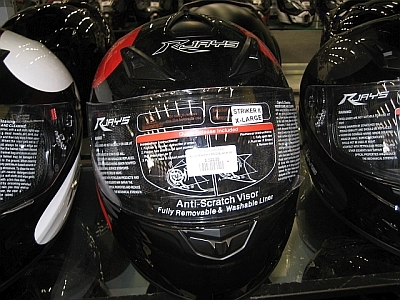
Road Rule 270 requires a rider to …..wear an approved motor bike helmet securely fitted and fastened on the rider’s head.
Few riders have a problem with wearing a securely fastened helmet.
However, there are significant problems with the definition of an approved motorbike helmet
In NSW, the definition requires that the helmet complies with any one or more of the following standards and has an identifying mark certifying compliance with that standard
The term complies with means present tense, hence the road rule requires the helmet to continue to comply, exactly as it was when it was offered for sale, including all packaging, labels, etc, required by the Standard.
This means that unless the helmet carries ALL the labels it came with, the helmet does not comply with the Standard and hence, the rider is in breach of Road Rule 270
The wording of the NSW Road Rule means that the helmet becomes non-compliant if the Instructions for Use and Care (swing tag booklet) are not accompanying the helmet or that the Informative labelling is removed from the visor.
Let’s look at how idiotic and confusing this really is.
Clause 5.8 of AS/NZS 1698:2006 requires a full-face helmet to be supplied with a clear visor in compliance with AS 1609. In turn, Clause 7.2 of AS 1609 requires that “durable labels shall be attached to eye protectors or their wrapping…”
Below is a typical standards compliant full-face helmet being offered for sale. Note that the “Informative Labelling” required by Clause 7.2 of AS1609 is printed on the protective film on the visor. Removal of the protective film renders the helmet non-compliant.

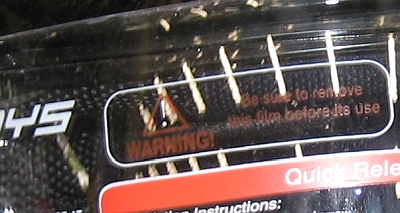
We may also note that the protective film on this helmet includes the words “Be sure to remove this film before use”.
Once the protective film is removed, the helmet is rendered non-compliant with AS/NZS 1698:2006 and hence, the rider does not comply with NSW Road Rule 270.
Removing the Instructions or visor labelling means the helmet is no longer an approved motorbike helmet as it no longer complies with AS/NZS 1698:2006. Similar provisions apply to UN/ECE 22-05.
The rider may be fined as if they were not wearing a helmet at all – not wear approved helmet, Offence Code 83390 earning them 3 license demerit points and a large financial penalty, the same penalty for failing to wear a seatbelt in a car, or failing to wear any helmet at all.
Similarly, if any labels on a standards compliant helmet have faded in the sun, or become partially illegible due to sweat and wear, the rider is liable to be fined as if they were not wearing a helmet at all.
It’s an ongoing farce that effectively means ANY rider can be fined for their helmet failing to be in compliance with the Standard – because labels are missing, the Instructions for Use and Care are not attached to the helmet or labels are faded and/or partially illegible and hence the helmet cannot be classed as in perpetuity being in the same condition as when first sold.
The entire body of law is brought into disregard by such poorly constructed and unworkable regulation.
The Australian Consumer Law 2011 demands that any helmet offered for sale must be able to be substantiated as being in compliance with the standard claimed.
Road authorities have set a trap for motorcycle riders, triggered by removing packaging labels to make the helmet useable.
The current road rule is impossible to comply with if one intends to USE a helmet.
Additionally, if the helmet turns out to be non-compliant and is recalled by the ACCC, then the rider may be fined, having been made responsible for the non-compliance of the helmet supplier. This reverses the onus of responsibility of consumers, blaming the victim.
This same problem manifests itself in a raft of additional issues faced by motorcycle riders. Helmet wearing enforcement statistics fail to reflect how many riders were not wearing a helmet at all.
SOLUTION:
Rewrite the definition of an approved helmet to read “….has an identifying mark certifying compliance with one or more of the following standards:”
i.e. remove the current requirement for enduring compliance, perhaps as is done for AS/NZS 1698 by Clause 5 of the Queensland Transport Operations (Road Use Management—Road Rules)
OR,
as is done in WA by
Gazette No.54, 1 April 2016, Page 1005
A Note on Helmet Standards
Product Standards ensure that a helmet purchased by a rider meets minimum safety requirements. In fact, most helmets exceed these minimums to ensure product variation in production is always ABOVE the requirements.
Helmets are assessed for Standards compliance prior to sending them to market. This assessment is based on statistical sampling and testing of production systems and statistical sampling of finished products for batch testing.
It is impossible to determine standards compliance of a single helmet without destroying it.
Helmet compliance can only be certain at the point of sale, where the Australian Consumer Law has the power to require proof of compliance and force recalls through regulation of the content of a Standard claimed. Product Standards include label and packaging requirements.
Once a standards compliant product is put into service and used, determination of Standards compliance can no longer be performed.
Contents of Standards are not regulations for use of a product.
Standards are for products offered for sale. To go down the path of disallowing parts of a Standard is a slippery slope towards useless standards.
However, “in-service” regulations may provide guidance as to safety for products in-use (e.g. tyre or brake wear limits, noise limits, etc)
A Note on helmet wearing penalties
The use of only one prescribed offence “of not wearing a helmet” is a major point of potential conflict between police and riders
This creates a legal fiction which does not properly address the fact all the major standards have developed over time and any difference in safety between helmet standards is marginal.
The regulations need to specify a number of different offences (as is done in NZ) with a range of penalties which reflect the actual degree of unsafe behaviour giving officers on the ground options which are more appropriate
for example:
COMMENT
Regulators appear to be still fighting the 1950’s battle to get riders to wear a helmet at a time when there were no standards. The battle was won a long time ago. Australian riders have one of the world’s highest rates of helmet wearing. Failure to reform proscribed offences has brought the regulations into disrepute, with many riders viewing certain provisions of the current regulations as revenue raising measures or market protection for various vested interests, with little basis in safety.
Marks required for European helmets are abundantly clear, details are here.
Marks required on helmets Certified to Australian Standard AS/NZS 1698:2006 remain deeply confused and show clear market protectionism under the pretence of “safety”.
Helmets are Certified to AS/NZS 1698:2006 by various privately owned certification services companies.
Since 2003, Standards Australia has had no involvement in certification of helmets.
See Statements by Standards Australia at the 2015 Forum. In 2003, they sold their certification business and the “five ticks” trademark into private hands.
Any reference to Standards Australia certification can only be in relation to those older helmets certified to AS 1698-1988 up until 2003.
AS/NZS 1698:2006 helmets have NEVER been certified by Standards Australia.
The continued reference in road rules after 2003, to the “five ticks” trademark led to regulatory protection of the certification services market in favour of SAIG and hence, the retail market for helmets. Since 2010, the market for certification services has again been restricted by the JAS-ANZ accreditation requirement.
There is no evidence that this market restriction led to improved helmet quality. Instead, it maintained fewer helmet choices, higher prices and faulty helmet recalls. JAS-ANZ accredited certifiers simply took over the customers of those certifiers summarily ejected from the market without warning.
The JAS-ANZ restriction was introduced to NSW by Gazette on 5 February 2010 with NO public consultation at all.
The basis for change was a report from Vicroads to AUSTROADS, tabled at an AUSTROADS meeting of 12 November 2009. This report, almost completely free of facts, failed to explain the role of JAS-ANZ in preventing technical barriers to trade.
The JAS-ANZ restriction created an artificially limited market for motorcycle helmets. On 1 October 2009, there were only two Certifiers accredited with JAS-ANZ for motorcycle helmets and one of these had never certified a motorcycle helmet. Gullibility is apparent.
However, AUSTROADS is a private company wholly owned by the various States and Territories. It is tasked to draft road rules for use by States and Territories. As a private company it does not have to, nor does it, request input from outside interests such as consumer groups. Its deliberations are opaque.
A copy of the [report from Vicroads to AUSTROADS] was refused by the NSW RMS, by Vicroads and by Austroads. A copy was eventually obtained, on 13 August 2012, under the NSW Government Information (Public Access) Act from the NSW Dept of Transport.
It is apparent that the AUSTROADS process of making Road Rules does not follow the COAG agreed Better Regulation guidelines, adopted and published by each jurisdiction in Australia.
JAS-ANZ did not become aware of the road rule restriction until some months after NSW first introduced the requirement. The market was reconfigured through fines issued to riders with compliant helmets, but with the “wrong sticker”. This is predatory protectionism through subversion of the purpose of JAS-ANZ to allow local manufacturers to address world markets. Promulgation of this protectionism to Victoria and SA through AUSTROADS reflects badly upon the process of making road rules.
Helmets supplied to the market are the responsibility of the Australian Consumer and Competition Commission and State and Territory based Departments of Fair Trading or Consumer Affairs. Powerful law ensures helmet suppliers must be able to substantiate compliance. Road Rules currently make the consumer responsible for faults of non-compliance at supply as well as in use.
Solution:
Replace wording for evidence of AS/NZS 1698 compliance to read “….the certification mark of a Certification body accredited with a National Accreditation agency that is a member of the International Accreditation Forum
JAS-ANZ is a National accreditation agency and a member of the IAF, but its inclusion on RR 270 definitions results in market protectionism.
However, it seems extraordinary that Road Rules for human behaviour should have as an objective, manipulation of the marketplace.
More could be achieved for improving helmet quality by working with the ACCC to increase the level of market surveillance through a simpler and cheaper method than the current CRASH program from Item 26 of the National Road Safety Strategy
A better solution is to adopt the WA model of Gazette No.54, 1 April 2016, Page 1005
What a confused and ill-informed mess this has become!
Are helmet attachments dangerous? Not those that break off (are frangible) or flex. Certainly no more than the peak on an off-road helmet.
A typical off-road helmet peak extends around 150mm from the helmet shell. Typically, peaks are attached by large screws. If the peak was not sufficiently rigid, it would either break off or fold down over the rider’s eyes once they got moving.
Around half of all helmets sold and used in Australia are off-road helmets.
AS/NZS 1698:2006 sets criteria for when external projections need to be tested for compliance. The test requires accessories, such as a peak, to be fitted during the test.
A distinction is made between projections being “rigid” or “non-rigid”. However, no definition is provided for either of these terms. It is an opinion.
If a “non-rigid” projection of the helmet outer shell has a vertical rise of greater than 5mm, then it must be tested and passed prior to the helmet receiving Certification of compliance.
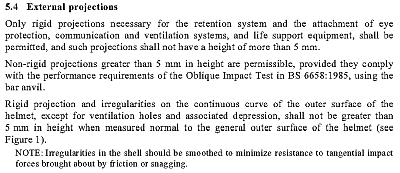
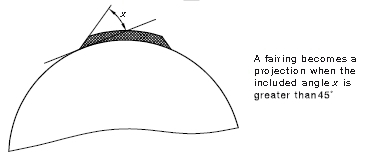
AS/NZS 1698:2006 cannot distinguish between the “peak” of an off-road helmet or an aftermarket camera with a frangible mount.
The “peak” is an attachment for a helmet. (as is a witness camera with frangible mount). The peak remains an “accessory” to the helmet.
Around half of all Certified helmets include a peak that extends significantly more than 5mm normal to the surface of the helmet.
It is apparent that an off-road helmet with a large peak fitted can be Certified as compliant with the Standard. Other Certified road helmets have a brow peak fixed with studs.
Hence, an aftermarket witness camera attached to a helmet with a frangible mount presents no greater an external projection than these peaks.
Like any other accessory, it may be removed or replaced with a different item. Just because an accessory is not “approved by the manufacturer” does not necessarily mean the helmet becomes non-compliant. You do not have to fit Mazda accessories or brake pads to your Mazda car because Mazda have “approved” or branded the ones they want you to buy at their prices. Nor are you required to do so because the Owner’s Manual makes statements directing you to only buy “genuine” or “manufacturer recommended” parts or servicing from them.
The ACCC has a view on this subject. As does Choice magazine.
Why has this issue got so confused?
We can only conclude it has arisen from assumptions, ignorance and/or misdirection by vested interests. It is now apparent that few understand the facts. Many continue to believe fairy tales.
Let’s look at off-road helmets with a peak.
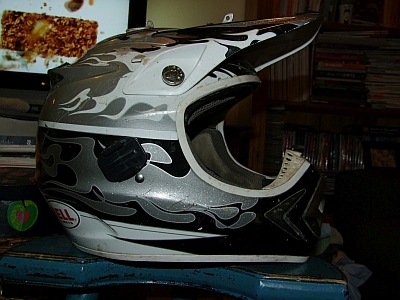
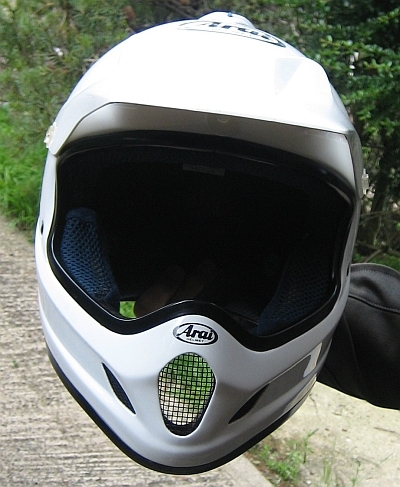
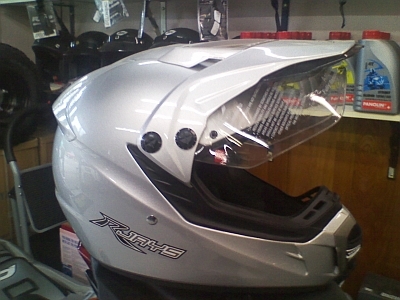
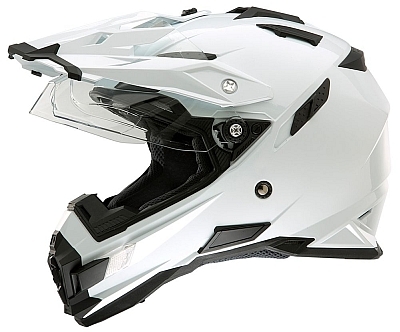
Note that the (accessory) peak is attached rigidly to the helmet shell, by large screws.
These helmets have been Certified as compliant with AS/NZS 1698:2006, yet they have projections of over 100 mm.
Proposals to amend road rules to limit attachments to helmets to less than 5mm would make around half of all helmets retrospectively illegal to use.
Note:
It may be instructive to seek test documents showing the actual results of testing off-road helmet peaks in accordance with Clause 5.4 of AS/NZS 1698:2006. A simple “Compliance Certificate” does not show this information.
It may also be instructive to determine whether the process for regulatory change to Road Rules is actually in accord with COAG agreed Better Regulation Guidelines in each jurisdiction.
When the inner part of the brain is moved against the outer part, the axons connecting the two may be torn in different places. This tearing is referred to as a Diffuse Axonal Injury (DAI). DAI can occur in any crash where the head hits something hard. The degree of DAI increases with severity. DAI will be present in a serious concussion and worse.
If you ran on foot, at full speed into a telephone pole, you would exceed the engineering limits of the very best Certified helmets.
Even the best helmets cannot prevent DAI. In any motorcycle crash, chance has an enormous role.
In a serious head injury, DAI can be significant, causing coma, from which recovery is generally poor. Thankfully, these are quite rare.
There is no public health data to indicate that the risk of a serious DAI is increased by frangible attachments (i.e. they break off) on helmets, such as peaks or witness cameras.
Rigidly mounting an accessory to a helmet is not a good idea.
Frangible mount accessories present low risk of injury. There is no evidence to deny use of frangible mount cameras on motorcycle helmets.
Witness cameras have already proven their value in resolving crash responsibility.
Add an in-service regulation to the effect that
If road rules require helmets to always be in the same condition as when sold brand new, then most of these helmets are non-compliant with Road Rule 270.
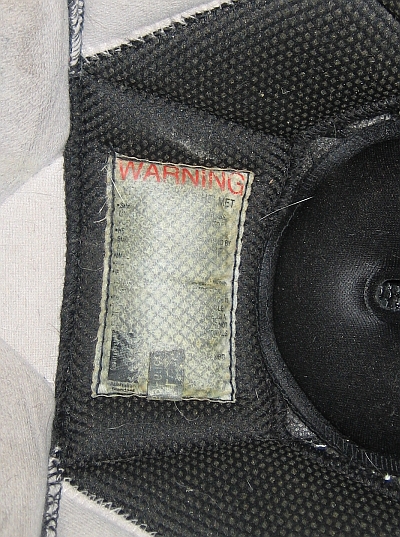

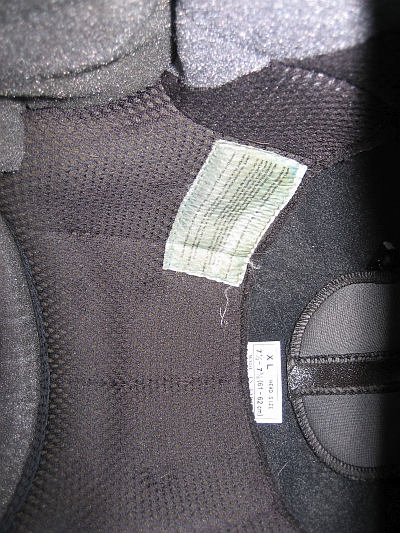

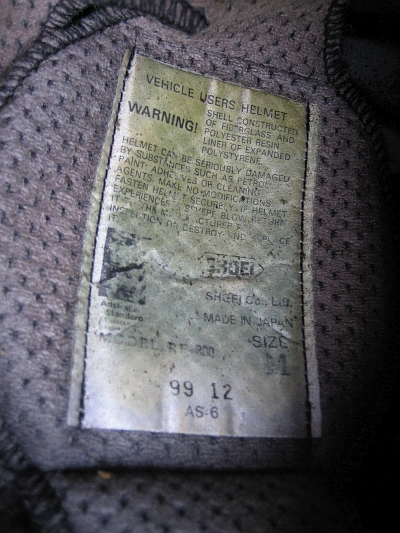
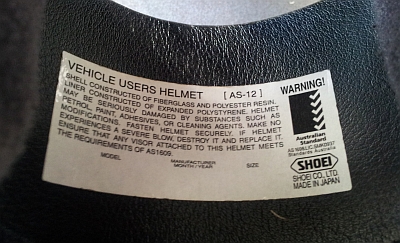
Contact Info
The Motorcycle Council of NSW Inc.
PO Box 517
Parramatta 2124
Ph: 1300 679 622 (1300 NSW MCC)
General Enquiries
Please direct enquiries to:
MCCNSW Email
enquiries@mccofnsw.org.au
Site Menu